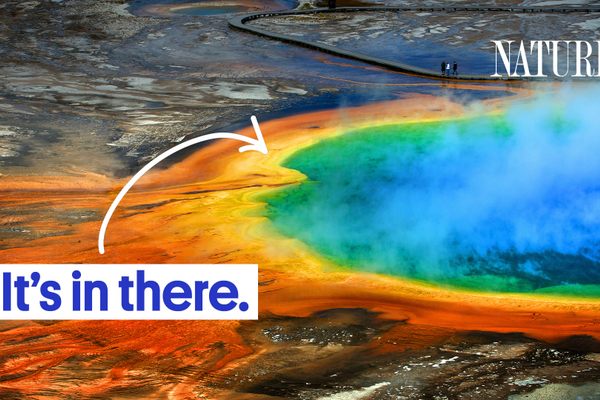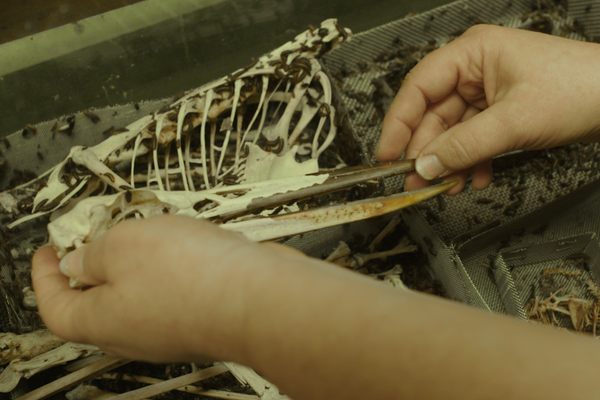
America’s First Game Warden Died Fighting for the Birds
Guy Bradley’s mission to protect Florida’s wading birds put him in the crosshairs of poachers—and left a legacy that endures in today’s conservation efforts.
In 1905, the sprawling estuaries of South Florida were a hotbed of sinister activity. Men with shotguns quietly skulked around the mangroves, marshes, and bays of present-day Everglades National Park, staking out rookeries of birds to kill and sell for their feathers. Plume hunting had just been outlawed, which made plumage all the more coveted. So the Florida Audubon Society hired a family man from the small town of Flamingo to be the region’s official bird guardian.
Guy Bradley was America’s original game warden, and he was the first to die in that line of duty, at the age of 35. He was murdered while trying to save a gulp of cormorants, sleek black creatures known to perch near the water and air-dry their wings. A notorious poacher fatally shot Bradley on the banks of a cormorant breeding ground and set his body afloat in the Gulf of Mexico.
More than a century later, Bradley’s legacy is still very much alive in tales passed down through generations, as well as more tangible memorials, such as the national park’s newly renamed Guy Bradley Visitor Center. But to understand the impact he had on birds and the Everglades, envision what South Florida was like 120 years ago, at the height of the Feather Wars.
The ‘Plume Boom’
From the crested helmets of Corinth in ancient Greece to the ornate war bonnets of North American Indigenous leaders, feathers have been prized decorations for thousands of years. In the 19th century, bird plumage started appearing more in everyday fashion, particularly on women’s hats and in wispy Victorian-era boas, leading to a turbulent trade period now known as the “plume boom.”

The plume boom made a battleground of the Everglades, a warm and wet oasis for leggy birds with brilliant natural embellishments. “The Plume Wars of the late 1800s and early 1900s had a devastating impact on Florida’s bird populations,” says Doug Young, chief operating officer of the South Florida Audubon Society, a regional chapter of the Florida Audubon Society. It particularly affected wading birds, like egrets and herons, which have especially flashy breeding feathers, as well as roseate spoonbills, desired for their flamingo-pink plumage. High-end milliners in London and New York City were paying $1,000 for a single ounce of feathers, equal to twice their weight in gold. As a result, it’s estimated that between five and 15 million birds were killed annually in North America alone. Young says entire colonies were wiped out, “often during nesting season, leaving chicks to die without parental care.” And some species, like the sought-after snowy egret, were hunted almost to extinction.
The Florida government took legal action against plume hunting in 1901, passing a bird protection law drafted by the American Ornithologists Union. But what good is a law that isn’t enforced? Plumers continued to pour into the Everglades searching for the most glorious crests and dramatic aigrettes, the extra-delicate, shaggy feathers that spray from an egret’s shoulders and back during the breeding season. They did so without much consequence, until the Florida Audubon Society found the right person to stop them.
From Plume Hunter to Hunter of Plumers
Bradley was 32 years old when he was offered the unprecedented job of being the Everglades’ resident bird protector. Before then, he was a plume hunter himself, hired as a teenager to guide outsiders to feathered treasure in his tropical backyard. The Ornithologists Union considered that to be a strength and, trusting that his hunting days were over, offered him $35 a month to be not only the game warden but a Monroe County deputy sheriff. Bradley, described as a “fearless fellow” who was “anxious to be invested with authority,” eagerly accepted the job.
In his book Death in the Everglades, author Stuart B. McIver wrote that Bradley’s new jurisdiction would have been teeming with gators, crocodiles, rattlesnakes, cottonmouth snakes, and panthers, but “even more dangerous would be the plume hunter.” One of the most dangerous was the leader of the plume-hunting Smith Gang, Walter Smith, who Bradley frequently encountered out on those inky waters.
One of those encounters proved deadly. On July 8, 1905, the game warden found Smith and his two sons on their schooner, the Cleveland, shooting at cormorants two miles off the coast of Flamingo. When Bradley attempted to arrest Smith’s son for poaching, Smith fired a shot from his boat across the water into Bradley’s tiny dinghy. Bradley’s body was found the following day, 10 miles from the scene of the crime.
The Beginning of a Major Conservation Movement
After leaving Bradley for dead, Smith turned himself in to the Monroe County Sheriff’s Department. He was charged with murder and faced hanging, but was ultimately acquitted and released from jail after five months. Smith’s not-guilty verdict sparked outrage from Key West to Manhattan, which made Bradley a nationally known posthumous hero. In a 1905 obituary written for Bird-Lore magazine, the prominent ornithologist William Dutcher wrote that “every great movement must have its martyrs, and Guy M. Bradley is the first martyr in the cause of bird protection.”
Without Bradley patrolling the infinite estuaries of the Everglades in his homely skiff, feather hunters ran rampant. Several more game wardens were killed before the Audubon Plumage Bill passed in 1910 and the Migratory Bird Treaty Act passed eight years later, finally putting an end to the feather trade for good. During that time, Congress also banned the import of feathery fashions from overseas.

Young says that Bradley’s death “brought national attention to the dangers faced by wildlife wardens and the urgent need for stronger bird protection laws.” The murder trial being reported by major newspapers such as the New York Times put Florida’s plume wars on a national stage and prompted stricter legislation. Continuing to fight Bradley’s battle against bird poaching, local Audubon societies ended up banding into one big National Audubon Society the same year he died. Some even point to his murder as the spark that led to the eventual establishment of Everglades National Park in 1947.
Today, Bradley is remembered as an environmental martyr, America’s OG game warden, and one of the great early conservationists of the 20th century. A 1.5-mile trail in Bradley’s town of Flamingo is named in his honor, and it leads to the Guy Bradley Visitor Center, in the heart of his former stomping grounds.
Every year since 1988, the National Fish and Wildlife Foundation gives out a Guy Bradley Award to a state and federal worker in wildlife law enforcement. “Law enforcement agents like Bradley are essential to virtually every aspect of wildlife conservation,” says communications director Rob Blumenthal, “from recovering endangered species to managing waterfowl and big game resources.” As of 2019, there were approximately 6,800 fish and game wardens employed across the United States.
In Bradley’s beloved Everglades, species like the golden-slippered snowy egret have rebounded due to conservation efforts inspired by the work of their early defender. The national park is now the bird capital of Florida and, arguably, the whole American South. It’s home to 88 percent of wading bird nests in South Florida, with 2021 data putting the number at about 90,000. “Today, poaching of egrets, herons, and other wading birds for their feathers is extremely rare in Florida,” Young says, “thanks to strong legal protections and conservation efforts.” Many of those, no doubt, owe themselves to the life and legacy of Guy Bradley.
Plan your next adventure with our Explorer’s Guide to the National Parks, packed with overlooked wonders, expert tips, and all the best spots to visit.













Follow us on Twitter to get the latest on the world's hidden wonders.
Like us on Facebook to get the latest on the world's hidden wonders.
Follow us on Twitter Like us on Facebook